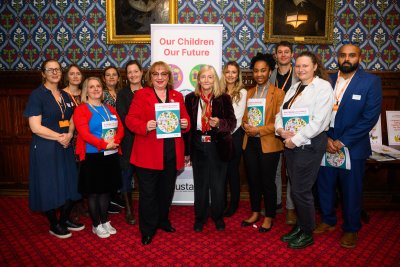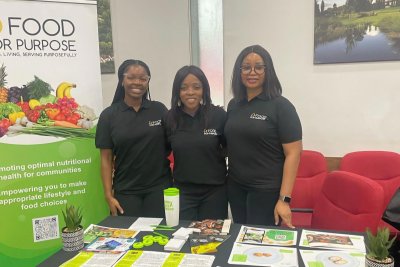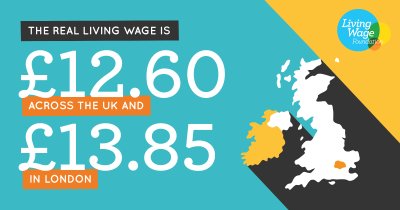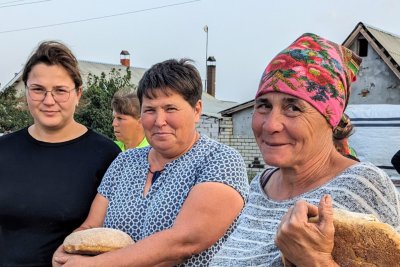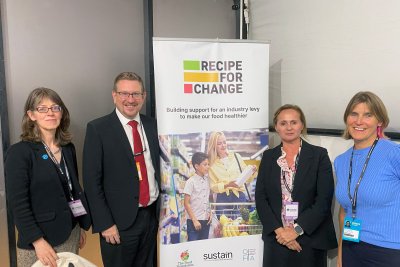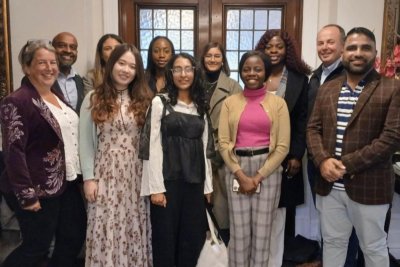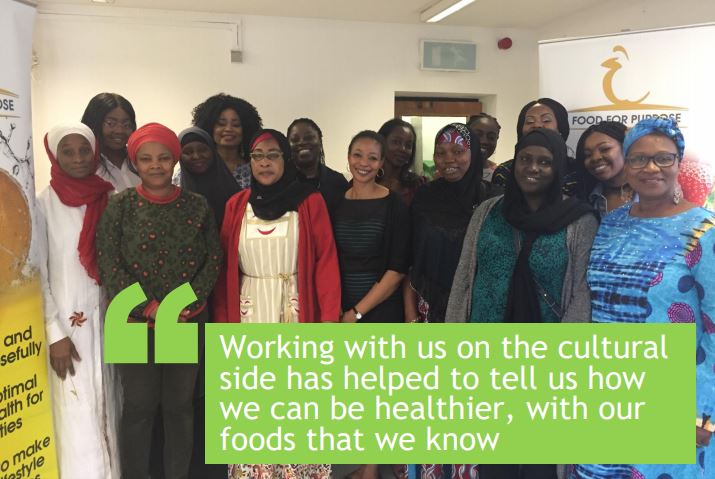
2020 has brought with it a number of societal wake up calls. The Covid-19 pandemic has raised urgent questions around health inequalities experienced by Black, Asian and minority ethnic communities. And the Black Lives Matter movement has brought into question a lack of representation across different sectors, particularly where decision-making and power-holding roles are concerned. This is especially true in the public health and food campaign arena, and needs urgent attention.
Last week, our Sustainable Food Places Campaigns team hosted a session on diversity and inclusion in healthy eating campaigns and messaging, led by our Sugar Smart Communities Ambassador, Shola Oladipo. Shola is a registered Dietitian and CEO of Food For Purpose (FFP), a not-for-profit organisation that delivers practical solutions for eating, living & functioning. She has years of experience working within faith-based settings with Black and minority ethnic populations to support communities access healthy eating messaging and support.
We were joined by nearly 100 public and community health professionals who also shared their experiences, reflections and potential solutions on improving diversity in messaging and campaigns. You can watch the recording here. In addition to Shola’s brilliant talk, attendees were split into smaller groups where they had a chance to reflect, raise questions and share local experiences. Outlined below are some of the key reflections and learnings from the session.
Meet and work with communities where they are
Black people and people of colour in the UK are more likely to be living with obesity, type 2 diabetes, hypertension, and now, Covid-19. They also belong to communities that are often branded ‘hard to reach’ by public health professionals and academics alike. Black people and other minority ethnic groups in particular are also often very community-oriented, active in hubs such as faith spaces, and in reality most definitely not ‘hard to reach’!
The idea that certain communities or cultures are harder to access or support is simplistic and dismissive, especially when said groups are often very well-networked with active and prominent community leaders. These leaders are not only trusted and very engaged with their community members, but they also have a sense of duty in supporting their community to live well and healthily. They are perfect partners who can support with making public health and healthy eating messaging relevant to their friends, neighbours and colleagues. Working with faith leaders and faith-based groups is often overlooked, but these are exactly the spaces that should be tapped into. They have built trust in their community through generations.
“The black church is one of the most stable entities across Black history”, Shola Oladipo, Food for Purpose
Places of worship are spaces where several generations from the same families meet often more than (now, virtually) once a week. They gather as a community, share food, share celebrations and share common interests through culture and faith. They are a ready audience who have a vested interest in their own each other’s health and wellbeing.
Tapping into the faith-based sector is just one example of how to diversify healthy eating messaging. The value of voluntary led community sector can be often overlooked, but they are actually the most successful groups at supporting behaviour change. Community-led organisations are key to promoting culturally sensitive and relevant messaging.
Messaging and asks need to be culturally sensitive and accessible
If public health resources only show white faces, or multi-coloured figurines (see Morph-like Change 4 Life characters below, which are arguably a very white cultural reference), and the foodstuffs are only popular western vegetables or staples, then this automatically excludes the minority ethnic groups who are statistically more like to suffer from nutrition-related chronic diseases.

Change 4 Life materials
Some of the most prominent resources endorsed by government public health bodies, like the NHS EatWell plate, and the Change4Life Food Scanner seriously lack a diversity in foods, which immediately makes the messaging irrelevant to many diverse communities. It not only excludes minority ethnic communities, but also sends the message to these groups are not included, or not important.
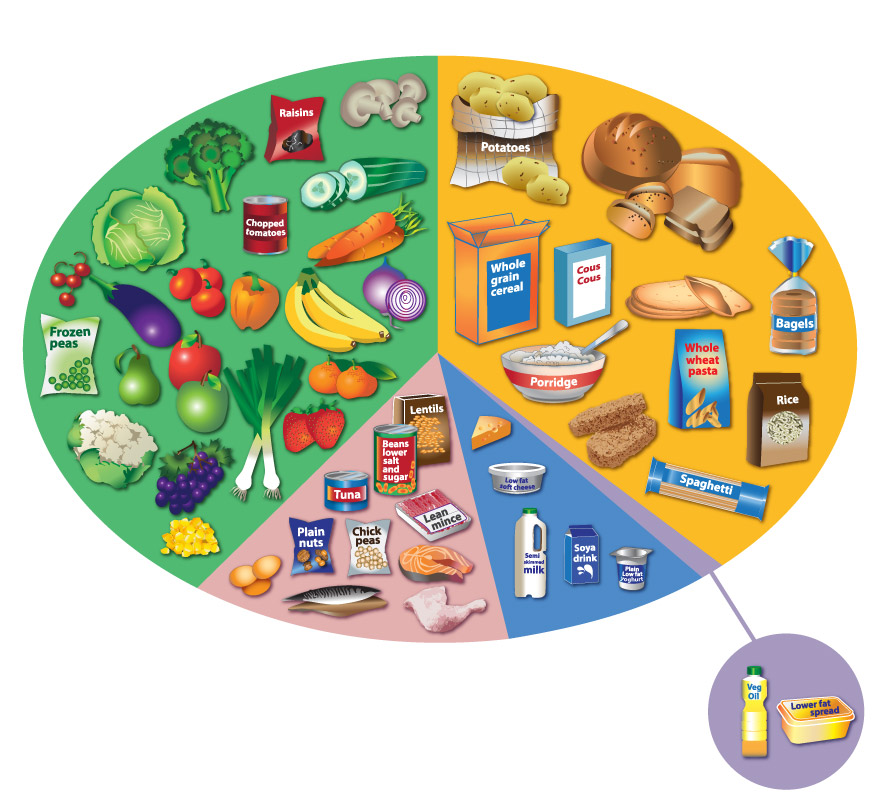
NHS LiveWell Plate
Championing best practice at a local level
Some brilliant steps have been taken to improve this, but these actions have largely been taken by the voluntary and community sector, who have been creating more inclusive resources and finding new routes to access different communities.
Shola of Food for Purpose, based in South East London, has created workbooks and videos for the Black church community which include Black African faces, and culturally relevant images of food plates, and runs healthy eating training for Church leaders. Fareeha Jay, a dietitian based in Plymouth, has a very popular YouTube channel which aims to convey healthy eating messaging in Urdu using South Asian cooking. In Bristol, as part of their 91 Ways project, the Bristol Meets the World cookbook was created to celebrate healthy cooking from different cultures. GCDA have been working with a Nigerian chef who incorporates UK-grown vegetables into Nigerian recipes. In Oxfordshire, SOFEA are working with local leaders to ensure their community larders are being stocked with culturally appropriate food.
.jpg)
Food For Purpose resources
Sharing power and resources
It is concerning that, even in areas with high numbers of Black, Asian and minority ethnic residents, many obesity steering groups and other decision-making bodies are not more diverse. Partnership working is important so that public health professionals, voluntary-led community leaders and members of the focus communities can collaborate to ensure public health campaigns and messaging are scientifically sound, culturally sensitive and locally engaging. There also needs to be adequate resourcing and better promotion of such exemplary efforts to make food education and access more culturally inclusive. And, especially now in the era of Covid, engaging with the community leaders is imperative to ensure food access support is dignified and caters for culturally appropriate foods.
The key to improving diversity and inclusion in healthy eating campaigns is communicating messaging using lived experience, local knowledge and nutritional expertise to create bespoke support.
What next?
Lack of inclusivity and diversity in public health messaging has been a prominent issue that has been put more at the forefront since Black Lives Matter protests this year, and the news that the pandemic has been disproportionately affecting those from Black and minority ethnic backgrounds. Although we are on a long journey, here are some key reflections and stepping stones along the way:
-
The volunteer-led community sector is the most engaged with, and trusted by, their communities. Without nurturing relationships with those key local leaders and champions, public health and healthy eating messaging is unlikely to take root locally.
-
Government-endorsed and NHS-led healthy messaging resources lack cultural diversity, both in the foodstuffs recommended, in the imagery of people they photograph and in the language they use. This needs addressing urgently.
-
There need to be better avenues for decision-making input from Black, Asian, minority ethnic, and other under-represented communities. This can take place within communities by involving experts by experience in shaping healthy eating work, and by including community leaders in decision-making bodies such a steering groups, alliances and partnerships.
-
The community sector are already leading the way with engaging marginalised groups and have created brilliant resources and translations to make existing messaging more accessible. These should be resourced and championed.
-
Covid has exacerbated lack of inclusivity in access to healthy, culturally appropriate food through the increased need in food support, which tends to preference white diets. But again, there are many organisations engaging with local leaders to support with access to relevant foodstuffs.
There is no single solution for making healthy eating messaging inclusive and anti-racist, but it’s heartening to see how much brilliant work is going on at the local level and it’s these grassroots voices that we need to be listening to and learning from. It is our duty as healthy eating network coordinators and supporters to champion best practice, offer resources and share decision-making opportunities, and be truly network-led.
Sugar Smart UK: Want your local area to become Sugar Smart?
Sustain
The Green House
244-254 Cambridge Heath Road
London E2 9DA
020 3559 6777
sustain@sustainweb.org
Sustain advocates food and agriculture policies and practices that enhance the health and welfare of people and animals, improve the working and living environment, promote equity and enrich society and culture.
© Sustain 2024
Registered charity (no. 1018643)
Data privacy & cookies
Icons by Icons8
